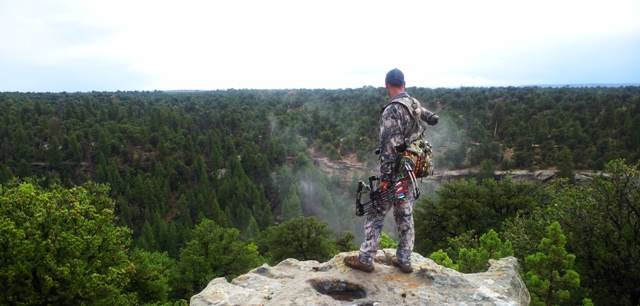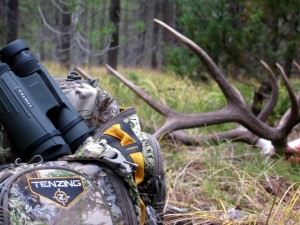Selecting an Elk Hunting Pack

When it comes to quality hunting gear, you can find opinions and reviews to support just about any recommendation. Selecting the equipment that will make you comfortable and keep you safe in the backcountry, however, is not something that should be left entirely up to someone else. While there is great value in soliciting the advice and experiences of other hunters, the ultimate decision should be based upon your specific needs and use. Finding the right elk hunting pack is no exception.
There are a lot of factors to consider when you are looking to purchase a new pack for elk hunting. Your style of hunting will probably be the biggest determining factor. At the end of the day, my decision boils down to these three characteristics:
- Function
- Reliability
- Comfort
Function
 This is possibly the most important factor to consider when trying to find the right hunting pack. Does the pack fit your style of hunting (i.e. needs)? If you’re a day hunter who always comes back to a truck camp, a smaller, lighter day pack is going to be a great option. If you’re a backcountry bivy hunter who spends 4-5 days at a time away from any form of conveniences, you’re going to need something considerably larger.
This is possibly the most important factor to consider when trying to find the right hunting pack. Does the pack fit your style of hunting (i.e. needs)? If you’re a day hunter who always comes back to a truck camp, a smaller, lighter day pack is going to be a great option. If you’re a backcountry bivy hunter who spends 4-5 days at a time away from any form of conveniences, you’re going to need something considerably larger.
As with any decision, there are going to be trade-offs. For day packs, finding one that will allow you to pack a decent load of meat back to the trailhead on your first trip out, yet small enough to remain light and nimble can be a challenge. Conversely, a bivy pack that will haul all your gear plus a good load of meat, AND not be heavy and bulky for day hunting once you’ve stashed camp is sometimes a challenge. It is important to evaluate your style of hunting and determine which of these factors are going to be most important for you. Most likely, you’re going to have to compromise (at least slightly) on one side of the equation.
Reliability
 It can be quite frustrating to load half an elk onto your new pack, 6 miles deep in the wilderness, only to find all the buckles on the pack are only rated to half of that capacity. It can be enough to make you see red the entire walk back to the trailhead when you realize the shoulder straps (as comfortable as they were in the store) can’t support the weight they are now experiencing and rip out. In a nutshell, TEST IT FIRST! Throw a heavy load (heavier than you actually anticipate carrying) onto the pack and give it a trial run. Make sure it isn’t going to fail you in the field before you ever take it into the field. If it does fail in the field, the manufacturer isn’t always to blame…
It can be quite frustrating to load half an elk onto your new pack, 6 miles deep in the wilderness, only to find all the buckles on the pack are only rated to half of that capacity. It can be enough to make you see red the entire walk back to the trailhead when you realize the shoulder straps (as comfortable as they were in the store) can’t support the weight they are now experiencing and rip out. In a nutshell, TEST IT FIRST! Throw a heavy load (heavier than you actually anticipate carrying) onto the pack and give it a trial run. Make sure it isn’t going to fail you in the field before you ever take it into the field. If it does fail in the field, the manufacturer isn’t always to blame…
Comfort
If you’re going to spend 6-8 continuous days living in your pack, it needs to be comfortable. Even a couple days of hauling around an uncomfortable pack can make the entire hunting trip “unfun”. Again, don’t rely on how comfortable it was empty, or with a 25 pound dumbbell stuffed in the main compartment. Load it up like you will when you put it to use in September. If it’s a day pack, put a little extra weight in there and wear it at a 3D archery shoot where you can get a good feel for how it feels after several hours. If it’s a bivy pack, load it up with all your gear, then throw a 50 lb plate on it and take it for an overnight camping trip. When you’re loaded down with a lot of elk meat, it’s usually not ever going to be “comfortable”…but you better make sure it’s at least going to be “possible” before you get there!
Consider these three features when you’re selecting your next elk hunting backpack, and your back will thank you in September.
